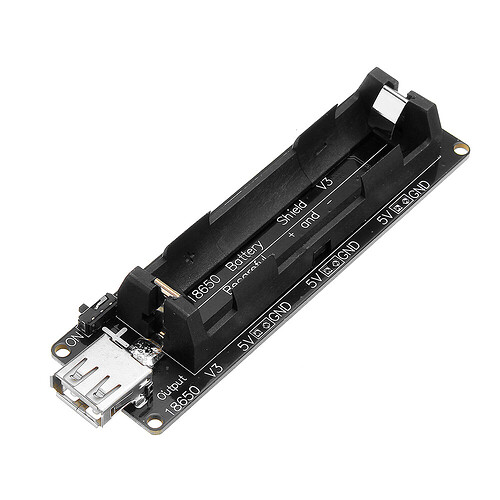b3y0nd:
The reason for a personal board would be to eliminate clutter, and have resistors built in specifically for the LED i/o pins...?
You can make stuff a lot smaller often, by leaving out parts you don't need, placing it closer together, or even using both sides of a PCB.
You're talking about "motion sensors" but the HC-SR04 is of course just a distance sensor. For that, there are much smaller options (like the VL53L0X, which is a few mm square). The HC-SR04 is pretty big. A more true to word motion sensor is the RCWL-0516 module, sensing motion a few meters away and in all directions. Moving your arm is enough already (now imagine a group of 6 dancers standing around 12 of those sensors and no motion allowed for 30 seconds - that was interesting :-)).
There are dedicated charger ICs for LiPo batteries. A fixed resistor sets the charge current (based on the battery capacity), the IC takes care of current control and charge control - regulating current, cutting it off when the battery is full, etc. No doubt the device in #2 has one such chips, probably on the back of the PCB. How they do that exactly I don't know, that's for the charger specialists.
As far as the personal board...
what would you need to "design" the board?
number of i/o pins?
components?
bluetooth?
For starters: circuit diagram (seems you don't have that yet), or a complete list of components and what they're supposed to do.
LEDs mounted on the board, or wired to the board, for example. What connectors in that case is another parameter, in the first case the type/size of the LEDs.
Allowed size/shape of the board.
Mounting holes/slot and location of them.
That kind of things. Things like number of I/O pins follows from that.
How many produced to make it realistic?
Depends on what you want... Lots of projects are one-off. You normally start with just one or two boards, to make sure everything is fine: circuit correct, traces correct, physical fit OK, no overheating, etc.
Such a Nano w/bluetooth can be a very good basis for a one off board (saves cost in components and effort), mount that on top of another board which has the rest of the components, which will likely include a port extender in that case.
